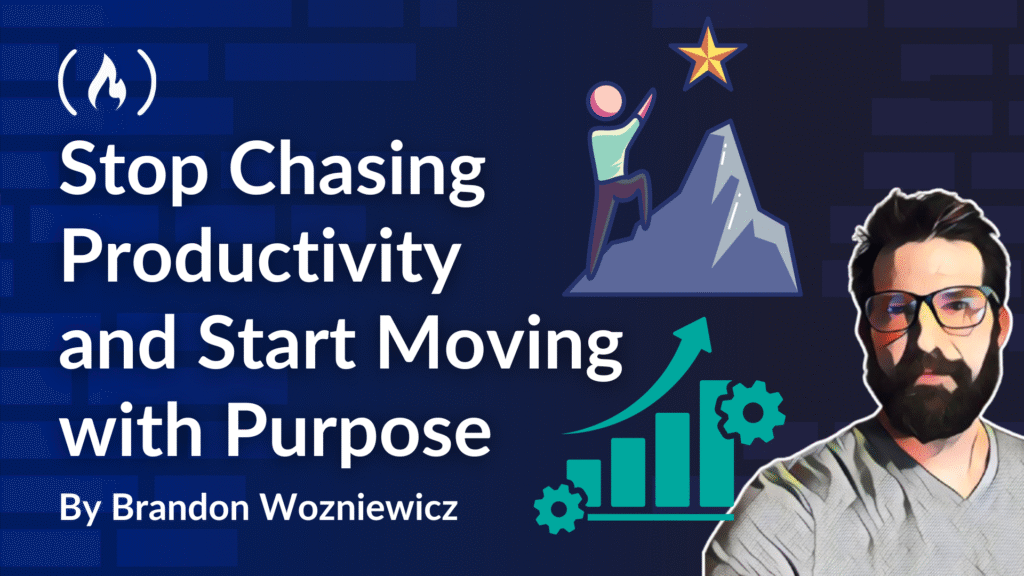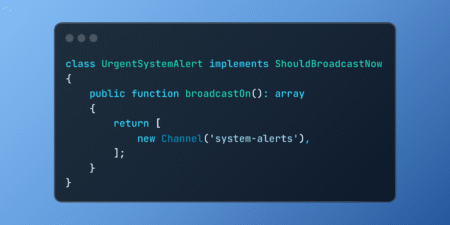Most people know how to set goals. And many understand that developing good habits is key to reaching those goals. Yet, despite this knowledge, it’s still easy to feel stuck – or worse, in motion without direction.
We chase productivity without asking a deeper question: Are my actions actually moving me toward who I want to become? Being busy feels good. It’s a quick hit of dopamine every time we check something off our to-do list – even if that list has nothing to do with our actual goals.
In my own pursuit of reaching my goals, I began developing a simple framework to help me align my daily actions with the person I wanted to be. This isn’t a radically new concept here. It is more like a refined mental model that’s built from things you’ve probably heard and read before. But it’s designed to fit together in a clear, usable way.
The goal is to help bridge the gap between big-picture intentions and everyday behavior. I call it PATH.
It stands for:
Purpose – your why
Aspirations – the vision of who you want to become
Targets – clear, measurable goals
Habits – the consistent actions that support those goals
This is the framework I use to stay oriented. Not just to be productive, but to be intentional. I still get off track, but I find my way back a bit quicker.
In this article, you’ll learn how to apply the PATH framework to clarify your direction, set meaningful goals, and build habits that stick.
Table of Contents
Busy Doesn’t Mean Effective
Being busy can feel like progress. Sometimes it is – you’re moving toward your goals, checking boxes, staying active. But other times, it’s just noise. A way to avoid sitting still. A way to avoid asking the harder question: Is this making a meaningful difference?
Sometimes, we chase productivity not because we’re clear, but because, in fact, we’re uncertain. And doing something – anything – feels better than acknowledging we might be lost.
On the other hand, you can have clear goals and develop effective habits. But if someone asked you why you picked those goals, would you have an answer? Why do you want to lose ten pounds? Why do you want to start that company? What are you really aiming for?
Here’s a thought experiment: Imagine your funeral. You get to pick one person to give your eulogy – and they can only say one sentence about you. What do you hope they’ll say?
This is a personal question. And I know my answer very clearly. Do you know yours?
The Power of Frameworks
You do not rise to the level of your goals. You fall to the level of your systems.
— James Clear
In programming, a framework is predefined code that helps developers build software more efficiently and effectively. It abstracts away the implementation details of common problems – things you could handle yourself, but probably don’t need to. The tradeoff? You give up some flexibility in exchange for speed. In other words, frameworks help you solve your problem faster by deciding a few things for you.
Developers lean on frameworks like React or .NET because they help us focus on solving meaningful problems, rather than wrestling with boilerplate code. PATH works the same way: it abstracts the structure so you can spend more time executing on what matters.
When it comes to setting goals, it’s no different. It’s easy to get lost in these implementation details and end up overcomplicating the process. We want the perfect strategy or the ideal plan. But in reality, progress almost always beats perfection. Initially, we don’t need the most elegant system – we need one that we can follow.
That’s where frameworks shine. They reduce friction and help you stop tinkering with the how and start taking action on the what. They free up mental energy, allowing you to focus on actually solving the problem.
This isn’t new. Every great tool – whether it’s a budgeting app, a productivity system, or a JavaScript library – obscures just enough complexity to help you move towards a solution faster.
A Framework For Reaching Your Goals
PATH is a framework I’ve used for years to align my actions with my desired future self. Most goal-setting systems start with habits or outcomes, but PATH begins a bit further back: your purpose.
P is for Purpose
Purpose is the core of who you are and what matters most. It is your mission statement, no more than a sentence or two. It should be you. A strong purpose will help you get back on track when you veer off course.
A is for Aspirations
Once you’ve decided on your purpose, the next step is to dream a little. This is the fun part.
Where do you want to be in the next 5 to 10 years? Try to picture a typical day of your ideal future – not necessarily what you own, but what you experience and do.
Where do you live?
What time do you wake up?
What do you do during the day?
Who are you with?
Here is an example:
I live by a beautiful lake in the mountains. I get up around 7 am, go for a long run, and then eat a healthy breakfast. I spend my day writing. Evenings are slow, spent laughing on the porch with friends and family.
Now, let’s break that down into aspirations – broad themes that define the kind of life you’re building. From that vision, here are three I see:
Be in good shape
Be a writer
Spend quality time with friends and family
These are your aspirations – the “A” in PATH. And they’re not meant to be specific or time-bound. Think of them as a compass, not a destination. Their job is to give you something to aim at over and over again.
T is for Targets
Targets are the specific goals we aim to achieve.
Each aspiration should have one or more targets – clear, time-bound goals that move you in the direction of your aspiration.
These targets should follow the SMART framework:
Specific
Measurable
Attainable
Realistic
Time-bound
For example, if you aspire to become a software developer, a target might be:
Contribute one fix or update to an open-source project by the end of the month.
If aspirations are our compass, targets are the destination. They let you measure progress and know when you’ve arrived.
H is for Habits
Habits are where the rubber meets the road.
Every target should have one or more supporting habits – things you do consistently that move you towards your goal. While they will generally be daily or weekly routines, one-off tasks are also acceptable. The idea is these are things that move the needle.
For example, if your target is to run a 5k event, a habit might be:
Run 3 miles every other day.
Or, if you’re just starting, you may want to create a one-off task such as:
Map out a running route.
Again, these habits (or tasks) are needle-movers. Following them – actually following them – should almost guarantee that you reach your targets.
When it comes to building a habit, the key is to start small, sometimes really small. In the beginning, the goal isn’t performance, it’s momentum. And while momentum can be hard to start, once it’s moving, it’s even harder to stop.
If you’re trying to build a writing habit, begin with two sentences. If you want to exercise more, start by putting on your workout clothes. Or just drive to the gym. The point is to make starting frictionless.
Consistency also depends on cues. Every habit needs a reliable trigger – something that prompts you to take action. It might be a specific time of day, walking in the door after work, or finishing your morning coffee. Over time, that cue becomes automatic, and so does the habit.
Complexity and Difficulty Are Not Synonyms
There’s a moment in the boxing film Bleed for This where the main character is asked, “What’s the biggest lie you’ve ever been told?” He answers:
“It’s not that simple.”
The interviewer tries to clarify – as if she believes the main character doesn’t understand the question – but he cuts her off and essentially says:
“No, that’s the lie. It is that simple.”
That line stuck with me, because we often treat life like it requires a perfect plan before we can begin. However, sometimes the hardest part is simply deciding.
Don’t confuse something hard with something that’s complex. In my experience, the most meaningful things in life are often simple yet challenging.
Knowing what to do isn’t the challenge. It’s doing it – over and over again, especially when it’s boring, inconvenient, or the outcome is uncertain. That’s why clarity matters, and frameworks can help.
There’s the person who spends their entire life looking for an elevator. And then there’s the person who starts climbing the stairs.
Figure out who you want to be, and filter your goals and actions through that lens.
I’d bet almost anyone reading this could name a few things that would take less than an hour a day that would completely change their life over time. The difference – the only difference – is that the person who gets clear on what they want and then actually does those things every day…gets there.
At the end of the day, the goal isn’t to be productive. It’s to be intentional. To align your daily actions with your goals and ensure those goals are pushing you toward the person you want to become. That’s the idea behind PATH – a framework for being intentional.
Summary
If you remember nothing else, here’s the heart of PATH:
Purpose – Define your why. A short, personal mission statement that keeps you grounded.
Aspirations – Paint a picture of who you want to become. Think 5–10 years out, focused on experience, not possessions.
Targets – Turn aspirations into SMART goals with clear deadlines. These give your vision structure.
Habits – Identify consistent, meaningful actions that drive progress toward your targets – daily, weekly, or even one-off tasks.
I’ve created a free Notion template to help you get started with the PATH framework.
→ PATH Goal Tracker Essentials
There’s also an upgraded version available for those who want habit tracking, progress calculations, and more.
→ PATH Goal Tracker Plus
Enjoyed this article?
I write at the intersection of low-code development, thoughtful automation, and systems thinking.
Explore more at scriptedbytes.com
Source: freeCodeCamp Programming Tutorials: Python, JavaScript, Git & MoreÂ


